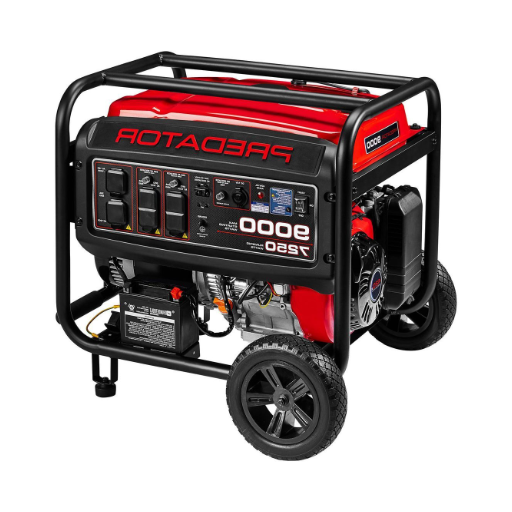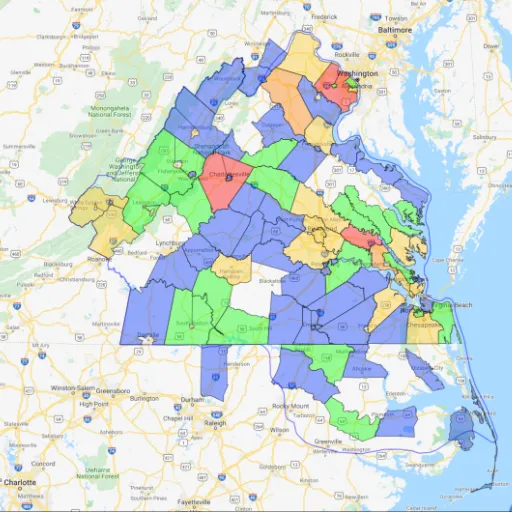When it comes to ensuring reliable power during unexpected outages or powering equipment in remote locations, portable generators serve as a versatile and practical solution. This guide is designed to help readers understand the key factors to consider when selecting a portable generator, whether for home backup, outdoor activities, or worksite applications. From evaluating power output requirements to understanding fuel types and portability features, this article provides a comprehensive framework for identifying the right generator to suit specific needs. By the end, readers will gain the knowledge necessary to make informed decisions while exploring products suited for varied usage scenarios.
What size portable generator do I need for my home?
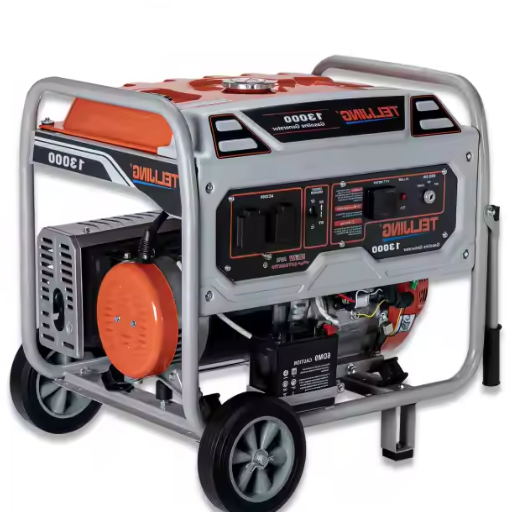
How to calculate your power requirements
To start estimating my power needs for a portable generator, I will first determine the most important appliances and devices I would like to power during a specific outage or use case. Each appliance has a specific rated wattage, which is available either on the nameplate or in the specifications of the manufacturer. I will add the running wattages of all those devices along with the additional starting (surge) wattages for any devices that contain electric motors like refrigerators or other air conditioning systems.
- Running Wattage: This is the power needed to run appliances continuously.
- Surge Wattage: This is the new energy requirement for the revolution of electric motors that drive appliances like refrigerators or air conditioners.
- Add a Safety Margin: I need to multiply the total by 1.1 or 1.2 so I do not go overboard and potentially break the generator.
For instance, if my peak wattage requirement (along with surges) sits around 4000 watts, while my running wattage sits at about 3000 watts, my generator wattage total should sit at around 4500 to 5000 to ensure that my generator works effectively at optimum safety.
Understanding wattage: Running vs. starting watts
To select a generator, one must differentiate between starting and running watts, as these factors directly influence the power requirement of devices and appliances. Running watts, also known as continuous watts, is the power consumed to keep an appliance or device in operation. It is the power consumed in the middle of an appliance’s use, also know as normal operation, and is usually lower in value than starting wattage.
Starting watts, often referred to as surge watts, is the additional power that is necessary for the device or appliance to ‘start up’, which is most common with products that have a motor or a compressor in them, such as a refrigerator, air conditioner, and power tools. These appliances tend to need a starting surge that is much larger compared to their running wattage. Take a refrigerator, for instance; it may run on 700 watts, but during the compressor cycle, it could need up to 2100 starting watts.
It is important to understand these two categories when it comes to sizing your generator. The starting wattage of several devices in conjunction with their running wattage must be accommodated by the generator’s capacity. Ignoring starting watts could risk underperformance of the generator and possibly harm attached appliances. In this regard, precise estimation of running and starting wattage permits dependable and secure functionality of your power system.
Matching generator size to common household appliances
To help you determine the correct generator size for typical home appliances, begin by noting the number of devices you wish to operate, followed by their running and starting wattage requirements.
- Refrigerator or Freezer: Average consumption is between 700 and 1200 watts during running, with an estimated 1200 to 2200 watts starting.
- Microwaves: Generalized Operational use stands between 600 and 1200 watts with no noted starting surge.
- HVAC: Running wattage typically falls in the range of 1000 – 1500 watts plus an additional surge in starting wattage up to 3000 watts.
- Lights: LED bulbs usually take between 5 and 20 watts, per bulb, with no starting surge noticed.
- Television: Average running watts stands between 100 and 400, which entirely rides on the make and model alongside the screen size.
Combine these estimations with value insight by ensuring the total starting wattage of all devices combined do not equate to the generator’s limit. Take as an example the refrigerator, which consumes 2200 starting watts alongside the microwaves, 1200 watts, then accompanied with lights at 200 watts, resulting in peak demand equal to 3600 watts.
Ensure your calculated requirement is adjusted at 20-30 so generator usage can be consistent, reliable and peak performance operate while taking into consideration these inefficiencies or added gear.
Which fuel type is best for portable generators?
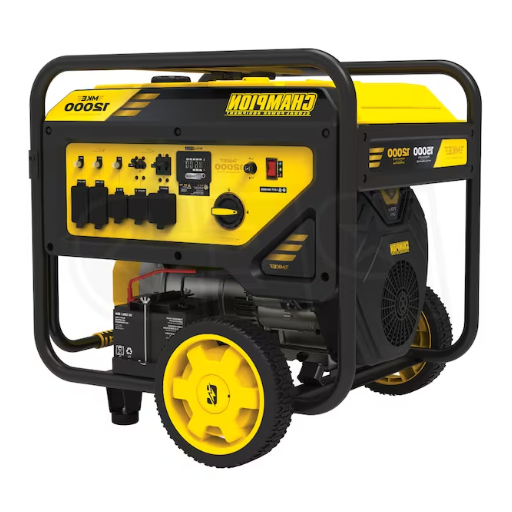
Gasoline vs. propane: Pros and cons
My choice between using gasoline or propane for a portable generator depends on the energy density, storage, and availability of fuel.
Pros of Gasoline
- Higher energy density: Gasoline usually delivers more power per gallon and translates to longer runtimes for the same tank capacity.
- Ease of availability: Gasoline is readily available at most fuel stations, which is usually very helpful in emergencies.
- Compatibility: A majority of portable generators are gasoline powered, which makes them perform better.
Cons of Gasoline
- Limited shelf life: Gasoline has a short lifespan of roughly 3 to 6 months unless stated otherwise with stabilizers.
- Storage hazards: It can catch fire easily, which makes its storage very dangerous.
- Environmental impact: Compared to propane, gasoline emits more substances into the environment, which causes more serious issues.
Pros of Propane
- Long shelf life: Propane is ideal for long-term storage because it does not degrade over time.
- Propane has a cleaner burning: It has reduced emissions resulting in a lower overall environmental impact.
- Safety in storage: While under pressure, propane is less volatile and therefore safer to store with other precautions.
Cons of Propane
- Lower energy output: Propane has about 10% less energy per unit compared to gasoline. It creates roughly 91,500 BTUs per gallon, while gasoline makes about 114,000 BTUs.
- Availability: Access to specialized refill stations is needed for propane, which makes it more difficult to refuel during emergencies.
- Performance in Cold Weather: Performance of propane is likely to suffer in harsh conditions because propane has low vaporization at reduced pressures.
For me, it is a matter of application and logistics. Under normal circumstances, gasoline can be controlled better due to the cheaper price and gas energy. For less frequent usage or use over a longer time frame, propane is preferable.
Dual fuel and tri-fuel options explained
The flexibility to use more than one fuel, such as propane, gasoline, or even natural gas, is offered by dual fuel and tri-fuel generators. They’re more flexible and versatile than single fuel fuel generators. Users in need of flexibility in fuel usage based on availability, price, and requirements will benefit the most from dual fuel and tri fuel generators.
- Dual-Fuel Generators: Users can switch between two fuels, usually gasoline and propane. For example, gasoline possesses a higher energy density of almost 44 MJ and performs better in colder climates as it vaporizes at high rates. For high-demanding applications, it is preferable. However, propane has an energy content of around 25MJ as well, but in a liquefied form. Propane is easier to combust, requires less maintenance, and has a longer shelf life. Hence, it is better for longer-term storage or when infrequent usage is expected.
- Tri-Fuel Generators: The functionality of tri-fuel generators is better than dual fuel generators because they support more than one additional fuel type, like natural gas, which is available through pipelines in residences. While Natural gas’s energy density of around 38 MJ/m3 is lower than gasoline and propane, it is still easier to access and has a stable supply in case of an emergency. This option is exceptionally better for household applications that have access to natural gas infrastructure.
Taking into consideration these aspects allows you to choose a dual fuel or tri-fuel generator that best meets your requirements, optimizing performance and costs under different situations.
Natural gas conversion kits: Are they worth it?
Compared to diesel or gasoline, natural gas emits lower air pollutants while providing cleaner burning fuel, which is consistently available. Along with these advantages, the implementation of passive natural gas heating systems in homes results in suppressed costs for fuel purchases where these systems are located.
- Consumption Rates: Natural gas has a lower energy density than gas (38 MJ/m³ versus approximately 46 MJ/kg) which effects a engines runtime and fuel efficiency. The cost limitation derived from the unit cost of natural gas offsets the potential increases in efficiency caused by other factors.
- Modifications: Conversion kits usually consist of fuel regulators as well as carburetor adapters, hoses, and other parts. Performance and durability can be maximized only if these parts are designed to function with the specific engine make and model.
- Maintenance Expenses: The amount of fuel consumed reduces carbon build-up and engine wear, which decreases maintenance expenses.
In my view, the conversion kits are very cost-effective if the amount the generator is used, the cost of the fuel in the area, and the extent to which the gas service can be provided all support the incentive to make the base investment and set it out.
How do I choose between inverter and conventional generators?
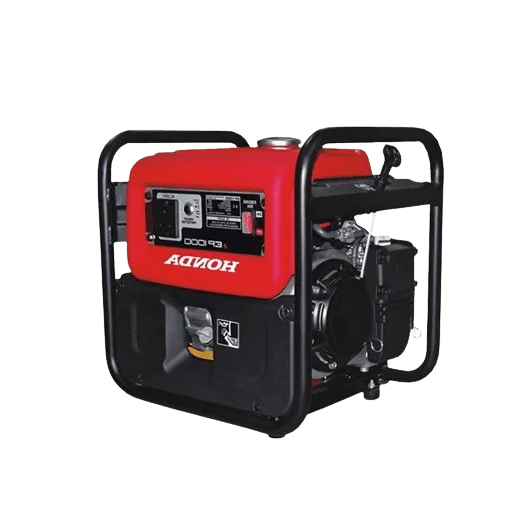
Comparing noise levels and fuel efficiency
Tackling the aspects of their noise output and fuel economy are incredibly essential factors that you must consider, especially for making a well-informed decision on whether to choose an inverter or a conventional generator.
Noise Levels
- Conventional Generators: Most conventional generators operate at a constant RPM, typically 3600 RPM, to produce electricity, which leads to higher noise levels. Depending on the engine size and design, noise emitted can range from 65 to 75 decibels which can be deemed as quite shocking and bothersome, more so when using it in residential areas or camping so it can be very annoying, to say the least.
- Inverter Generators: These advanced models are able to operate at a significantly lower noise level, through adjustable engine idle RPM to shift in accordance to the power demand. Most models lie in the 50 to 60 dB range. This majory cuts down on emitting disruptive noise making it ideal for more noise sensitive environments.
Fuel Efficiency
- Conventional Generators: Given that output fuel is generated at a full power level all the time, conventional generators are quite literally the most fuel-consuming devices. The overall efficiency of these generators is lower as they use roughly 0.5-0.7 gallons in an hour with a 5,000-watt unit, which is very poor.
- Inverter Generators: These models are much more efficient and comparatively advanced due to the capability of matching load and their flexible engine RPM, hence are more economical. Models that fall under the 2-3000 watt unit range with 2,000 to 3,000 watts then the fuel efficiency increases significantly to 0.2-0.4 gallons per hour which is extremely good.
The majority of people with inverter generators prefer them due to lower noise levels and better fuel consumption, whereas traditional generators can be more suitable for extremely intensive and powerful operations where noise and fuel costs are not as relevant.
Best applications for each generator type
Inverter Generators
- Home Backup: Best suited for basic appliances like fridges, fans, and lights. These appliances ensures dependable operation while operating quietly, fuel efficient, and provides an output range of 2,000 to 4,000 watts (typically uses 0.2 – 0.4 gallons/hour).
- Camping and Outdoor Trips: Due to their small, lightweight, and quieter range (noise levels averaging between 48 – 60 dB), they’re more suited for remote locations and recreational use.
- Electronics and Sensitive Devices: Ensure safety for smartphones, laptops, and other delicate electronics. With the advanced inverter technology used, they are ensured power with less than 3% total harmonic distortion (THD).
Conventional Generators
- Construction Sites: These generators are great for high demand power tools and machinery. Options that supply 5,000 – 10,000+, usually provide reliable power but under load may need between 0.6 to 1.2 gallons of fuel per hour.
- Whole-House Backup: Great with powering more grand homes or multiple high voltage appliances while in outages. Most are fitted with heavy duty engine hoping for longer run time.
- Industrial and Agriculture Use: For high power output, these generators are unmatched; often exceeding a whopping 10,000 watts. Considered great for operating heavy machinery as well as pumps or welding, these prefer less attention to noise (75+ dB) compared to output efficiency.
Through analysis of the distinct operational criteria and applicable technical metrics, users may choose the most suitable generator type based on their needs.
What safety features should I look for in a portable generator?
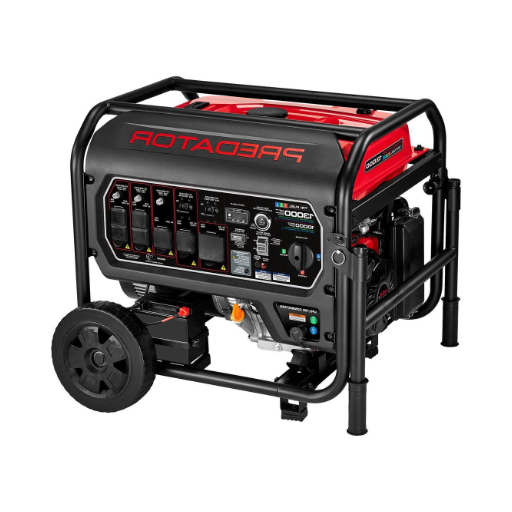
Low-oil shutoff and CO detection
The low oil shutoff indicator along with the CO detection system is fundamental to the safety of using portable generators. Operated in the absence of humans, generators are dependable appliances as long as they possess these two features.
- Low Oil Shutoff: When the oil supply goes too low, the oil level may fall below a limit which can lead to the engine suffering damage. With the oil level and pressure sensors, predetermined limits can be set to shut down the generator to prevent any features from being activated with only roughly a quarts worth of oil left in the engine.
- CO Detection: Integrated carbon monoxide detection systems take care of the gas emitted from the exhaust of the generator. Dangerously high levels, approximately exceeding 150 pp,m can be shut off by the device to protect the user from CO poisoning. Covering harmful emissions, integrated units routinely meet the ANSI/PGMA G300 performance standards.
During prolonged operation or where the chances of mechanical failure and pollution gas build up are high, users within closed surrounding can feel much safer due to operational safety standards.
Electric start and remote start options
The integrated electric motor that such devices come with optimally eliminates the lifetime hassle of pull-starting as it runs on an embedded battery. This added convenience, along with ensuring faster and more dependable engine ignition, is especially useful in cold environments where manual starting is difficult. A 12V rechargeable battery, a special start switch, and a powerful alternator for charging the battery while in use comprise the key components. Typical systems need from 0.4 to 0.6 of a crank motor power, depending on the engine size as well as compression.
Users may now take advantage of remote start options as well, as they can now turn the generator on or off from a distance using a wireless remote or smartphone application. These systems typically have a range of 100 to 330 feet, with some higher end gadgets utilizing Bluetooth or Wi-Fi for a further control range.
Such functionalities are extremely valuable when it comes to the generator placed in elevated or remote locations outdoors, as they guarantee ease of use and operational efficacy.
How do I maintain my portable generator for optimal performance?
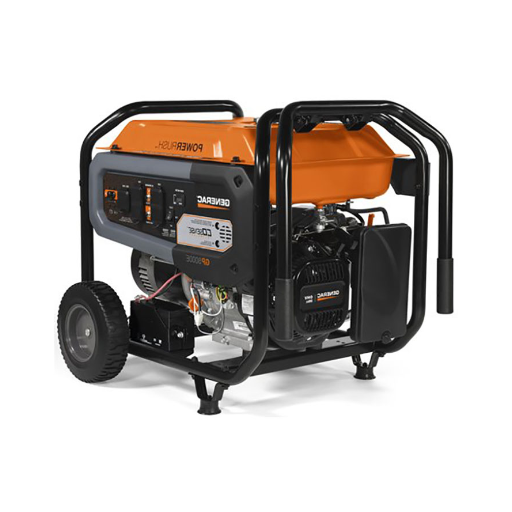
Regular maintenance schedule and tasks
In order to keep my portable generator performing at peak efficiency, I maintain a set routine which consists of several activities. Initially, I do an oil change after 20 hours of use and then again after every 50 to 100 hours depending on the manufacturer’s recommendations and oil type. Usually, I use a high grade SAE 10W-30 oil because it can keep the moving parts of the engine lubricated under different temperatures.
Afterwards, I clean or change the air filter for the generator every 100 hours or after three months. In my experience, a dirty air filter has a negative impact on a generator’s efficiency, so I make sure to keep it clean to allow proper airflow to pass through. Another task that I do every 100 hours is check the spark plug which is to be replaced after one year to avoid any potential ignition problems.
The fuel system of the generator also needs looking after. Periodically, around every six months, I clean out the fuel tank and fuel lines. I also make it a point to add a fuel stabilizer when the generator is going to be stored for a long time to stop the fuel from going stale. For generators built for long-term use, I also make sure the fuel is ethanol-free or contains less than 10 percent ethanol so that the internal parts are not damaged.
At last, I check the battery status to see if it is charged and I clean out any developed dirt on the terminals to ensure good conductivity. If the procedures are done regularly and in order, then the performance and life expectancy of the generator is greatly improved.
Proper storage and fuel management
Correct management and storage of fuel helps increase the efficiency and lifespan of a generator. Should the fuel require long term storage, make sure to seal the generator in an area that is clean, dry, and ventilated to avoid rust, moisture, and corrosion. Ideally, the area set for storage should be controlled in temperature as well, not being subjected to high extremes as it can affect the fuel and battery.
Before putting a generator into storage, it is best practice to either drain the fuel system or use a fuel stabilizer to ensure the fuel doesn’t go bad. Gasoline will inevitably break down over time, especially when ethanol is present, as it can lead to clogs and eventually trouble for the engine, so a better option is gasoline free of ethanol or containing only 10% or less. Also, if the generator relies on diesel fuel, anti-gel additives are a must in cold weather areas due to the high chances of it gelling.
- Content of Ethanol: Gasoline powered generators should be fueled with ethanol-free fuel or gasoline that has 10% or less ethanol.
- Kind of Stabilizer: Fuel stabilizers made for the fuel type can be utilized to prolong the shelf life; they usually delay oxidation for one year.
- Cloud Point of Diesel Fuel: Process diesel fuel so that it remains usable treated down to the operating temperature of the generator.
To prepare the generator for long periods of inactivity, allow the generator to run for a few minutes after a stabilizer has been added to help treat the fuel and circulate the fuel throughout the system. Remove the battery cables to avoid discharge during the storage period or charge the battery at regular intervals during the storage period. If these steps are followed, the generator can remain it in an inactive state for a long duration with little to no operating and minimal wear or damage.
Reference sources
Frequently Asked Questions (FAQs)
Q: What’s the difference between a standby generator and a portable generator?
A: Standby generators are permanently installed and automatically provide backup power to your home during outages. Portable generators, on the other hand, are mobile units that can be moved and used wherever you need power, such as for RVs, camping, or emergencies. Home standby generators typically offer higher wattage, while portable generators provide flexibility and convenience.
Q: What is an inverter generator, and why should I consider one?
A: An inverter generator, produces cleaner and more stable power than traditional generators. This makes them ideal for powering sensitive electronics such as laptops and smartphones. Inverter generators are often more fuel-efficient, quieter, and lighter than conventional portable generators, making them a popular choice for RV owners and outdoor enthusiasts.
Q: How do I determine the right size generator for my needs?
A: To determine the right size generator, calculate the total running wattage of all the devices you want to power simultaneously. Add the highest starting wattage among your appliances to account for surge power needs. Consider generators with a slightly higher capacity than your calculated needs. For home backup, a 7000-9500-watt portable generator is often suitable for most homeowners, while smaller 2000-4000-watt units are great for camping or tailgating.
Q: What is a dual-fuel portable generator?
A: A dual-fuel portable generator can run on either gasoline or propane (LP gas). This versatility allows you to choose the fuel based on availability, price, or preference.
Q: How long can a portable generator run?
A: The run time of a portable generator depends on factors such as fuel tank capacity, load, and engine efficiency. Most portable generators can run anywhere from 8 to 20 hours on a single tank of fuel at 50% load. Some models feature extended run times, while others may require more frequent refueling. Always check the manufacturer’s specifications for accurate run time estimates.
Q: Are portable generators safe to use indoors?
A: No, portable generators should never be used indoors or in enclosed spaces. They produce carbon monoxide (CO), a deadly odorless gas. Always operate generators outdoors, at least 20 feet away from doors, windows, and vents. Many modern generators come equipped with CO sensors that automatically shut off the engine if dangerous levels are detected, adding an extra layer of safety.
Q: What type of outlets do portable generators typically have?
A: Portable generators usually come with a variety of outlets to power different devices. Common outlets include standard 120V household outlets (some GFCI protected), 30A RV outlets, and 240V outlets for larger appliances. Higher-end models may also feature USB ports for charging mobile devices. Always check the generator’s specifications to ensure it has the right outlets for your needs.
Q: How do I maintain my portable generator?
A: Regular maintenance is crucial for the longevity and reliability of your portable generator. Key maintenance tasks include changing the oil regularly, replacing air filters, checking and replacing spark plugs, and keeping the generator clean. It’s also important to run the generator periodically, even when not in use, to keep the engine components lubricated. Consult your generator’s manual for specific maintenance schedules and procedures.
Q: Can I connect a portable generator directly to my home’s electrical system?
A: While it’s possible to connect a portable generator to your home’s electrical system, it must be done safely and legally. Never plug a generator directly into a wall outlet (known as backfeeding), as this is extremely dangerous. Instead, use a transfer switch installed by a licensed electrician. This allows you to safely power select circuits in your home during an outage. Some homeowners opt for interlock devices or manual transfer switches as more affordable alternatives to automatic transfer switches.



